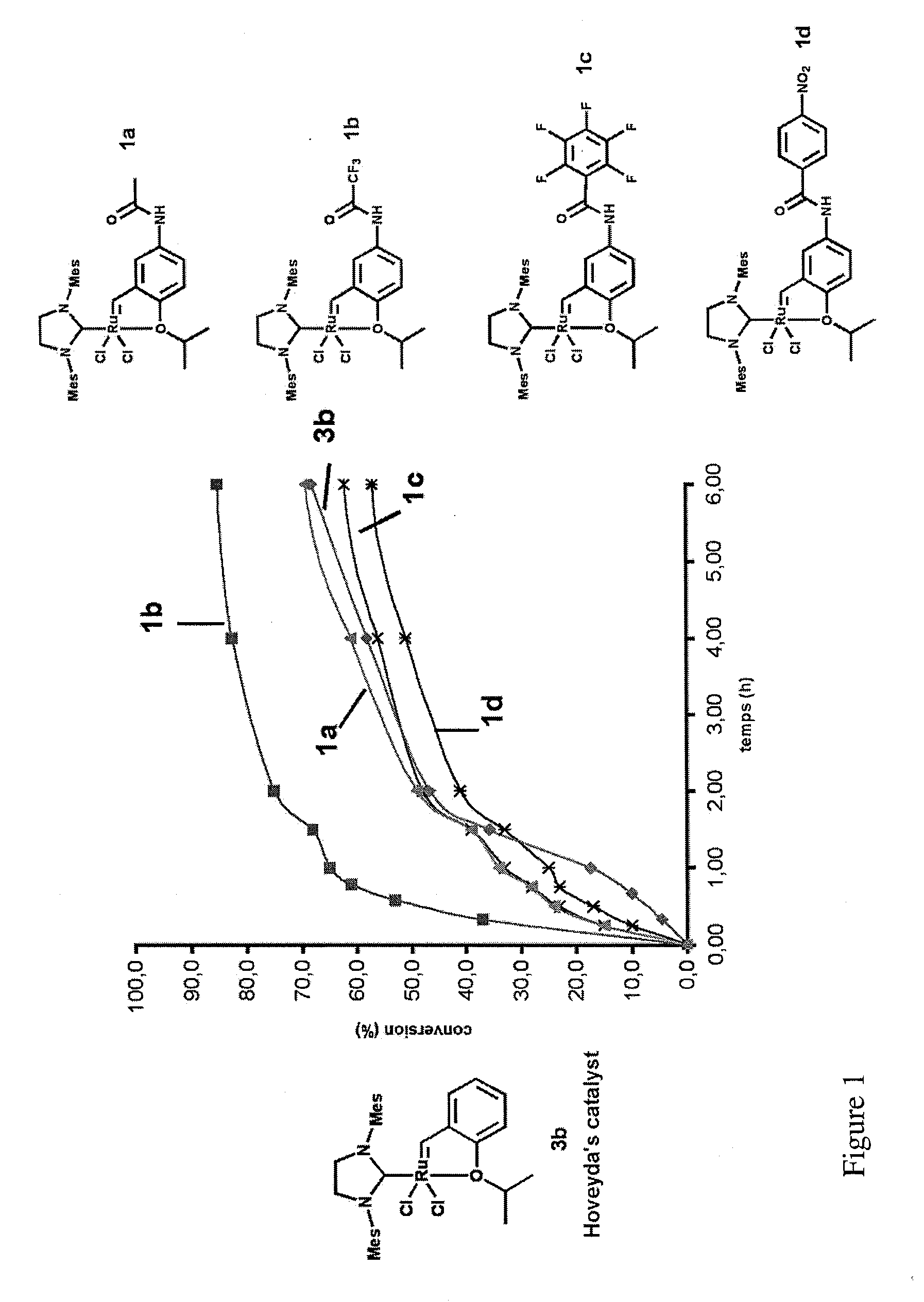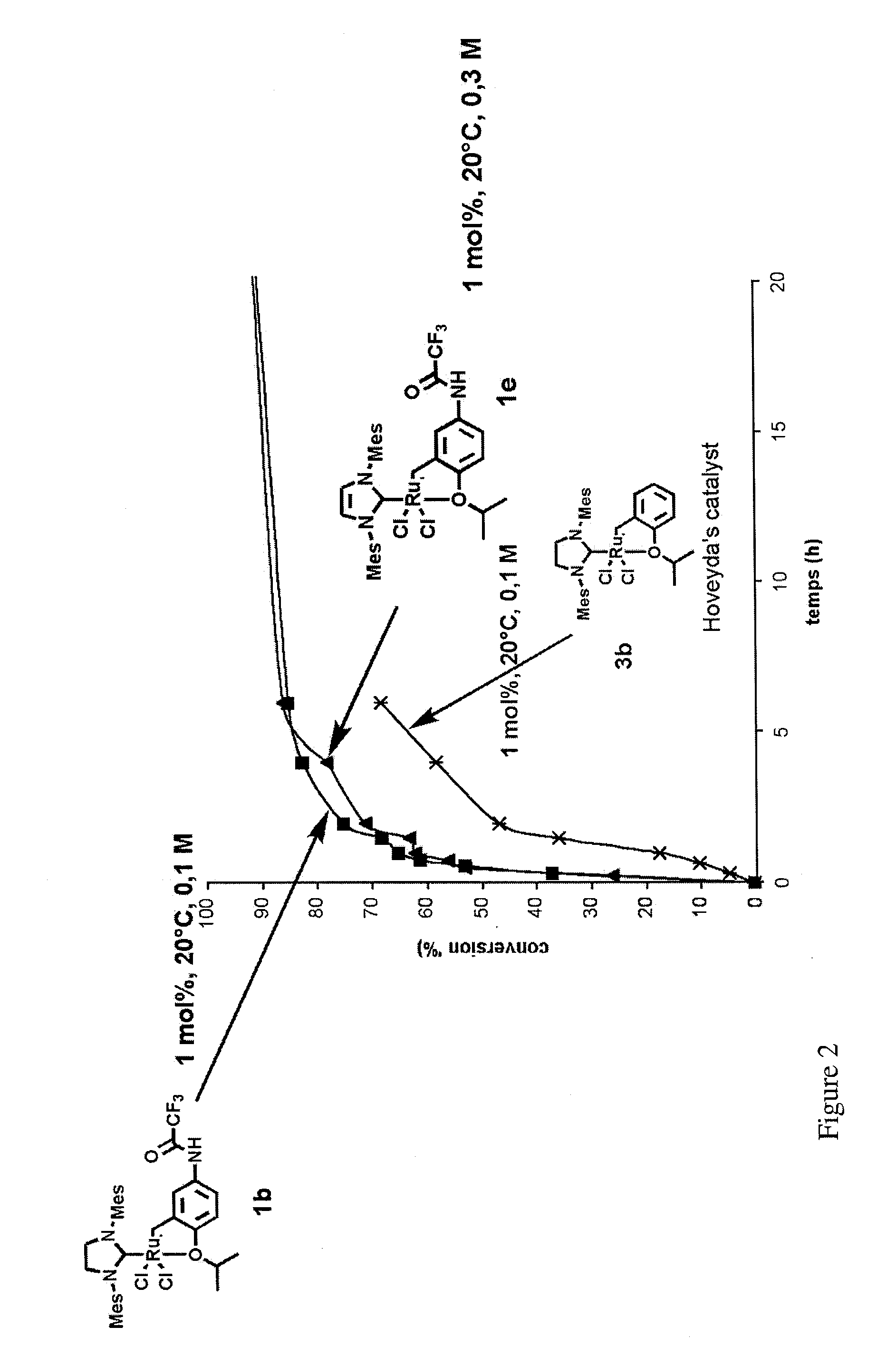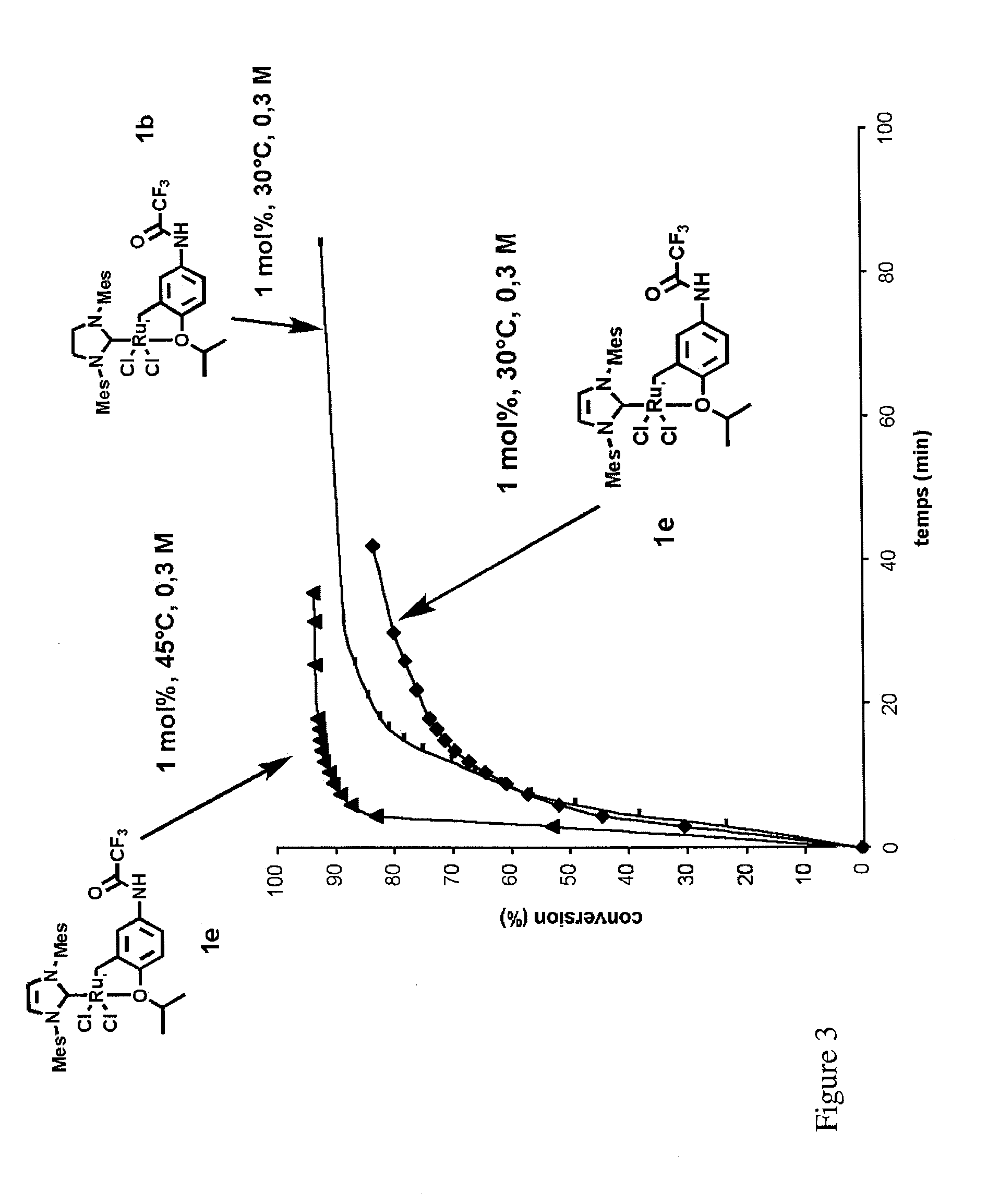Ruthenium-Based Catalytic Complexes and the Use of Such Complexes for Olefin Metathesis
a catalytic complex and ruthenium-based technology, which is applied in the direction of organic compounds/hydrides/coordination complexes, physical/chemical process catalysts, organic compounds/chemical process catalysts, etc., can solve the problems of significant toxic metal residue (ruthenium) contamination in reaction products, particularly detrimental to the synthesis of certain high-value products such as pharmaceutical molecules, and achieve clear reduction of reaction cost, better recycling of catalytic complexes, and avoid contamination of high-value products
- Summary
- Abstract
- Description
- Claims
- Application Information
AI Technical Summary
Benefits of technology
Problems solved by technology
Method used
Image
Examples
Embodiment Construction
[0067]First, the synthesis of the various examples of complexes according to the invention will be described below.
[0068]The complexes 1a, 1b, 1c, 1d, 1e and 1f according to the invention are obtained in two steps from the functionalized aniline 5.
[0069]The 4-step method of synthesis of this functionalized aniline 5 from para-nitro-phenol is described in the article “Activated pyridinium-tagged ruthenium complex as efficient catalyst for Ring-Closing Metathesis.” D. Rix, H. Clavier, Y. Coutard, L. Gulajski, K. Grela*, M. Mauduit*, J. Organomet. Chem., 2006, 691, 5397-5405.
[0070]The following diagram summarizes this synthesis in two steps:
1st step: synthesis of amides 6a, 6b, 6c, 6d, 6f, 9a, 9b, 10a and 10b from 4-isopropoxy-3-vinylaniline 5
[0071]According to a general procedure, 4-isopropoxy-3-vinylaniline 5 (1 eq.; around 0.2 mmol) is introduced into a round-bottom flask, placed under nitrogen, and solubilized in anhydrous dichloromethane (2-3 mL). Pyridine (1.5 eq.) is added to th...
PUM
| Property | Measurement | Unit |
|---|---|---|
| temperature | aaaaa | aaaaa |
| reaction kinetics | aaaaa | aaaaa |
| temperature | aaaaa | aaaaa |
Abstract
Description
Claims
Application Information
 Login to View More
Login to View More - R&D
- Intellectual Property
- Life Sciences
- Materials
- Tech Scout
- Unparalleled Data Quality
- Higher Quality Content
- 60% Fewer Hallucinations
Browse by: Latest US Patents, China's latest patents, Technical Efficacy Thesaurus, Application Domain, Technology Topic, Popular Technical Reports.
© 2025 PatSnap. All rights reserved.Legal|Privacy policy|Modern Slavery Act Transparency Statement|Sitemap|About US| Contact US: help@patsnap.com



